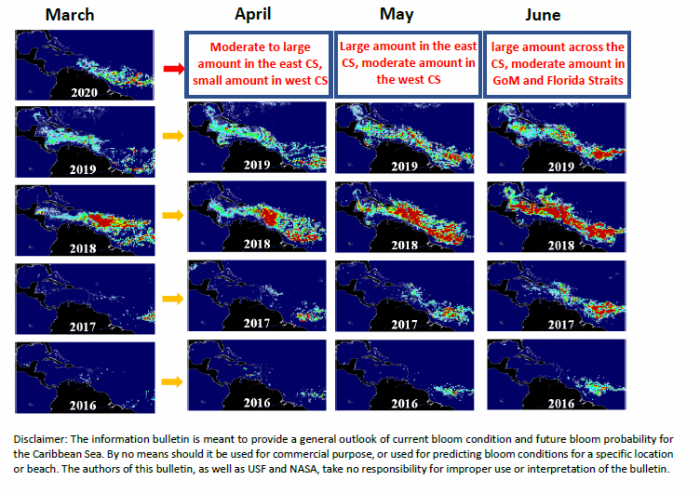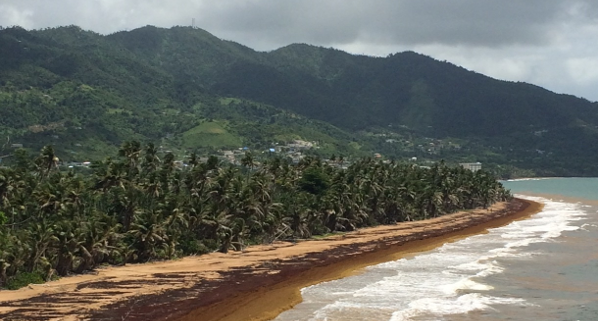In March 2020, the Sargassum amount increased significantly across the central Atlantic. Large amount of Sargassum was observed in the Central West Atlantic (CWA, i.e., the region east of the Lesser Antilles in the maps below) and the Central East Atlantic (CEA). Large amount also appeared in most of the eastern Caribbean (up to 67oW and 17oN). The lower Lesser Antilles Islands should have already experienced some minor to moderate beaching events. In other regions, Sargassum remained to be minimal, these include the Gulf of Mexico (GOM), Florida Straits, and western Caribbean. In all regions combined, the total Sargassum amount increased from 1.6M tons in February to ~ 4.3 million metric tons in March, similar to March 2015 (4.2M tons) and March 2019 (4.7M tons).

This is alarming for the coming months. Looking ahead, the eastern Caribbean will see large amounts of Sargassum in April to June 2020. The western Caribbean will also experience some small to moderate amounts. Some of the Lesser Antilles Islands will continue experience moderate to strong beaching events on both their windward leeward beaches. This situation may continue into summer, and the overall bloom intensity is likely to be similar as that in 2015 based on the current observations. We will keep a close eye on how Sargassum in the tropical Atlantic may evolve in the next two months. More updates will be provided by the end of April 2020, and more information and near real–‐time imagery can be found under the Sargassum Watch System (SaWS, https://optics.marine.usf.edu/projects/saws.html )



